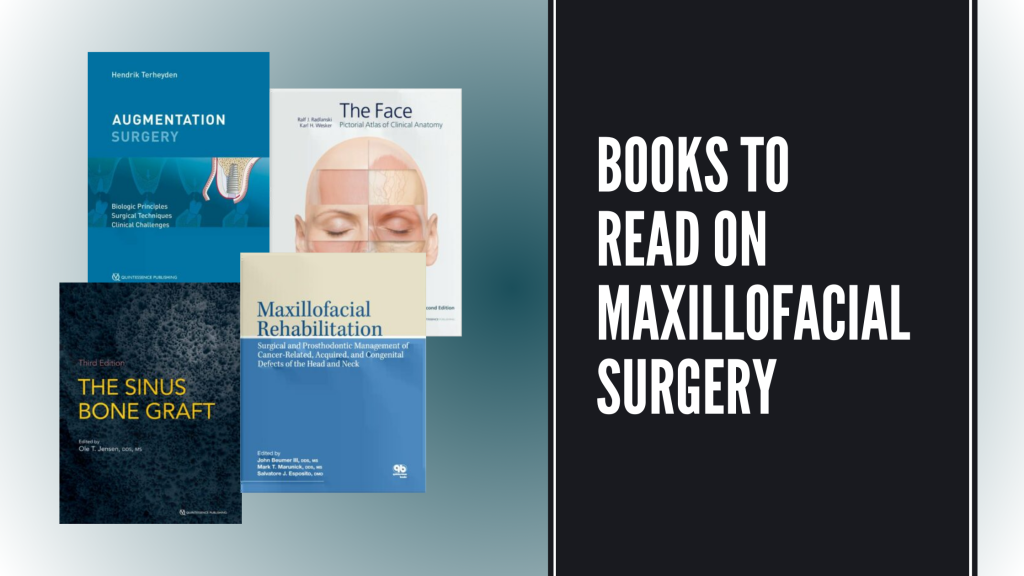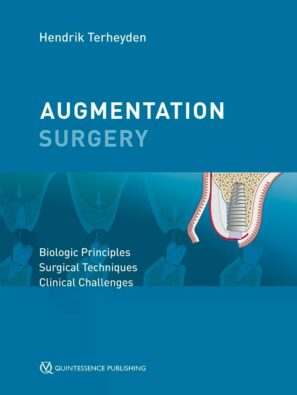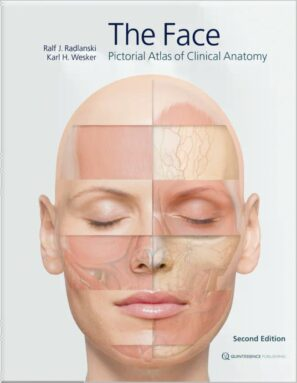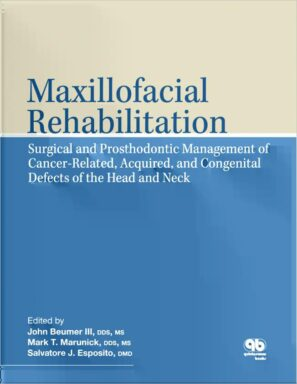Maxillofacial surgery is one of the most in-demand parts of dentistry in today’s time. In dental practice, it is quickly becoming one of the most busy sub-streams of dentistry. Along with this, the stream is quite susceptible to development as newer technologies come up. This is why, dental practitioners must keep up their knowledge to offer their patients the best care. Here are some of the top books that dental practitioners go through to improve and update their knowledge about maxillofacial surgery:

Augmented Surgery By Hendrik Terheyden:

In medicine, bone and soft tissue augmentation of the alveolar ridge is somewhat unusual since it is feasible to accomplish true biological regeneration of deficient alveolar bone. With this book on maxillofacial surgery, the author contributes significantly to clinical judgement and knowledge management in this dynamic field. The basics of bone regeneration biology, jaw atrophy, wound healing, and grafts and materials are covered in the book’s opening parts. Later chapters include standard augmentation techniques, such as bone grafting and soft tissue management, giving even the most fastidious surgeons a complete understanding of their choices. The final section of the book covers a clinical decision-making framework for various circumstances, challenges in the aesthetic region, posterior jaws, and completely edentulous ridges.
The Face By Ralf J. Radlanski & Karl H. Wesker:

In this maxillofacial surgery book, the very intricate topographic-anatomical connections of facial anatomy are shown layer by layer using incredibly detailed, three-dimensional anatomical photographs. There have been descriptions of anatomical characteristics, notable landmarks, and clinically relevant hard and soft tissue, nerve, and blood vascular constellations. Another important thing is to have the same perspective throughout the different phases of preparation. The images remain prominent, but the text and figure captions that go with them draw attention to certain issues. The detailed illustrations are mostly based on live anatomy and the corresponding magnetic resonance imaging images; anatomical preparations provide further support.
The Sinus Bone Graft Edited By Ole T. Jensen:

While the previous version offered extensive information on the types of grafting materials and procedures available at the time, this revised edition of the book looks to the future with innovative treatment alternatives, some of which eliminate grafting. This maxillofacial surgery book reviews the well-tried lateral window method for sinus elevation and grafting, and offers much other transcrestal access to the sinus, with or without grafting material. One section of the book goes into great length on the many types of implants and implant placement techniques available, many of which are designed specifically to avoid sinus elevation. This book contains clinical case studies, how-to guides for specific surgical procedures, and discussions on the science of bone formation and how ongoing research moves us closer to the ultimate goal of using tissue engineering to completely regenerate new teeth every day.
Maxillofacial Rehabilitation Edited by John Beumer III, Mark T. Marunick and Salvatore J. Esposito:

The Maxillofacial Rehabilitation – Surgical and Prosthodontic Management of Cancer-Related, Acquired, and Congenital Defects of the Head and Neck – edited by John Beumer III, Mark T. Marunick and Salvatore J. Esposito, explains how to treat patients who have acquired and congenital defects in the head and neck.
Patients should be able to live happy, fulfilling lives once their bodies are back in practically normal form following treatment. However, tight coordination across several medical disciplines is necessary to achieve successful outcomes. Particularly given recent advancements in maxillofacial prosthesis and reconstructive surgery, the rate of growth in the rehabilitation of mouth and facial malformations has been much too slow. For example, during the past 20 years, free tissue transfers have been employed all over the world to treat bone abnormalities in the jaw. Nonetheless, a significant portion of surgeons are ignorant of the need to reconstruct the tongue’s size and shape to improve speech, mastication, and salivary control. This updated edition provides the reader with an in-depth look at the latest developments in dental care, reconstructive surgery, and maxillofacial prosthesis, with an emphasis on a truly multidisciplinary approach. New chapters have been included with information on tissue engineering and digital technologies, and every chapter has been thoroughly revised to highlight the most current advancements in the use of osseointegrated implants and free vascularized flaps. To avoid future patients complaining that “there is no cure that can be worse than the disease,” the reader will get useful knowledge about state-of-the-art therapeutic techniques.
These are some of the books which maxillofacial surgery practitioners must go through. It can help them have a broader understanding of the field and help them offer better treatment to the patients. These are edited and updated versions which discuss the latest trends and developments to help practitioners offer better treatment.

